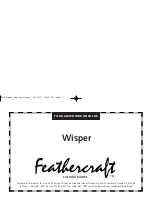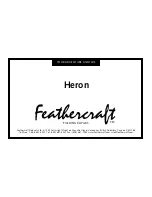
Owner's Manual
Cormorant 470 / 430 / 390 AL
6.2
35 knots
65 km/h
6.3
•
•
•
•
•
•
•
•
•
It is strongly recommended that helmsmen receive adequate training in
boat handling before setting to sea for the first time.
Speed
Darkness and fog
Persons or movable gear in operator's field of vision
Loading and load distribution
Sea conditions
Rapid acceleration
Transition from displacement to planing mode
The international regulations for preventing collisions at sea (COLREG's)
and the rules of the road require that a proper lookout be maintained at all
times and observance of right of way. Make certain no other vessels are
in the path before proceeding.
Information
Propulsion engine trim angles
Operator vision from the helm can be obstructed by high trim angles of
the craft and other factors caused by one or more of the following
conditions:
Handling Characteristics
Information
Caution
Information
Information
Periodic inspection of the propeller for excessive wear or damage is
recommended in order to maintain peak performance and to maximise
the longevity of the engine.
Caution
Maximum speed:
Ensure all crew are informed about the craft's behaviour.
Be aware that factors such as altitude, temperature, load, and bottom
growth may affect performance.
The helmsman may have to take sharp avoiding action at any time.
Passengers should, therefore, be seated and holding-on when underway.
This craft is primarily intended to be supported by a combination of
buoyancy and planing forces
Information
Before conducting any rapid acceleration or high-speed manoeuvres,
passengers must be warned to sit and hold-on.
Information
Rain and spray
Caution
Seaways are infinitely variable and all craft can meet conditions that will
challenge the boats handling characteristics and/or the helmsman's
ability. Proceed with a margin for error at all times. Avoid making sharp
turns at speed, particularly in a short seaway.
Information
Visibility from the Main Steering Position
Caution
This craft may be entirely clear of the water for short periods of time in
normal operation (i.e. become airborne)
Technical Software
© CEproof 2019
15/21







































